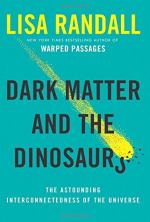|
This section contains 835 words (approx. 3 pages at 400 words per page) |

|
Summary
Our sun, which is about 4.5 billion years old, is located near the mid-plane of the Milky Way disk and traverses the galaxy at some 220 kilometers (136 miles) per second. The sun orbits the center of the galaxy approximately every 240 million years. Randall notes that "not only do stars evolve but galaxies do as well." In an interesting aside, Randall discusses the naming of celestial objects including planets, meteors, meteoroids, meteorites and asteroids. Definitions of these terms have changed over time as astronomers learned more about our solar system.
The word "planet" serves as a good example. Originally, the ancient Greeks used the term 'asters planetai' (wandering star) to refer to observable lights in the sky that moved. As astronomy became more precise and a heliocentric (sun- centered) solar system replaced the earlier geocentric (earth-centered) model, planets were understood to be...
(read more from the Chapter 6 - Meteroids, Meteors and Meteroites Summary)
|
This section contains 835 words (approx. 3 pages at 400 words per page) |

|




